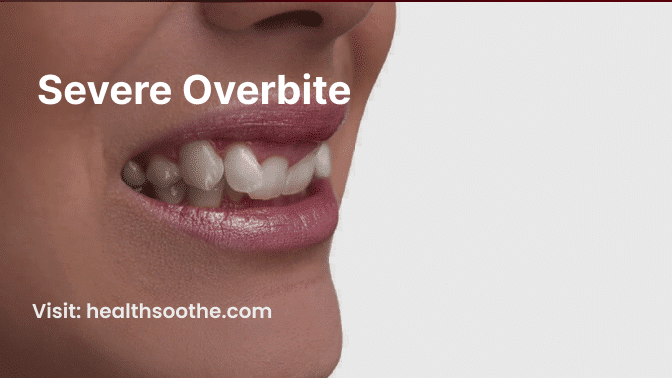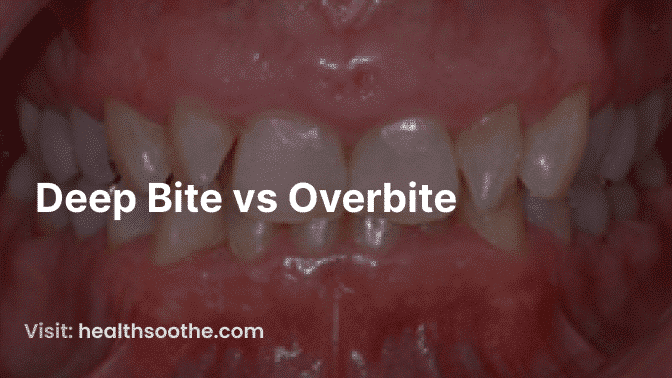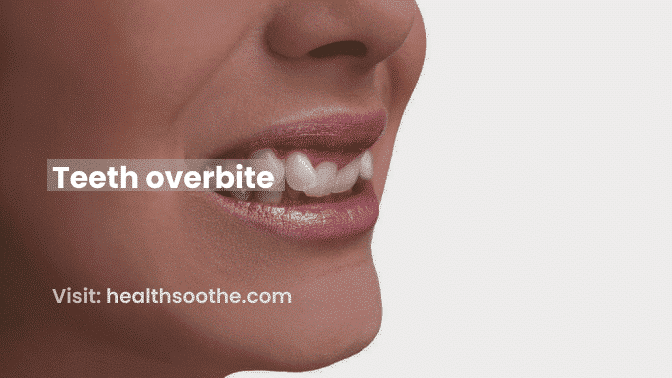A captivating smile is often considered a significant asset, but for individuals with severe overbites, it can be a source of discomfort and self-consciousness.
A severe overbite occurs when the upper front teeth significantly overlap the lower teeth, affecting both the appearance and functionality of the bite.
In this article, we will delve into the world of severe overbites, exploring their definition, differentiation from normal overbites, prevalence, and common causes.
Definition and Differentiation
To begin, let's establish a clear understanding of what an overbite is and how it differs from a severe overbite. An overbite refers to the vertical overlap of the upper and lower front teeth when the jaws are closed. In most cases, a slight overbite is considered normal and poses no significant concerns.
However, a severe overbite is characterized by an excessive protrusion of the upper teeth over the lower jaw, leading to various dental and facial issues.
Prevalence and Common Causes:
Severe overbites are more prevalent than you might think. According to dental professionals, approximately 10-20% of the population experience some form of malocclusion, with overbites being one of the most common types. The causes of severe overbites can be multifactorial, and a combination of genetic and environmental factors often contribute to their development.
- Genetic Factors: In some cases, individuals may inherit a predisposition to developing severe overbites from their parents. Jaw and tooth size discrepancies, as well as variations in jaw growth patterns, can be inherited traits.
- Childhood Habits: Prolonged thumb sucking, pacifier use, or tongue thrusting can exert pressure on the developing teeth and jaws, leading to the development of an overbite. These habits can cause improper alignment and affect the proper growth of the jaw.
- Skeletal Abnormalities: Certain skeletal conditions or abnormalities, such as a smaller lower jaw or an underdeveloped upper jaw, can contribute to the development of a severe overbite.
- Malocclusion: Malocclusion refers to any misalignment of the teeth or jaws. Conditions such as crowded teeth, missing teeth, or a misaligned bite can contribute to the development of a severe overbite.
It is important to note that severe overbites can manifest at any age. Therefore, timely diagnosis and intervention are crucial in preventing further complications and achieving optimal treatment outcomes.
Signs and Symptoms of Severe Overbite
Severe overbites can present with a range of signs and symptoms, affecting both the physical and emotional well-being of individuals. Recognizing these signs and symptoms is crucial in understanding the impact of a severe overbite and seeking appropriate treatment. Here are the key indicators to look out for:
- Physical Indicators: Protruding Upper Teeth: One of the primary visual signs of a severe overbite is when the upper front teeth significantly protrude over the lower teeth. This creates an imbalanced and pronounced appearance of the upper jaw, which can affect the overall facial aesthetics.
- Receding Lower Jaw: In severe cases, the lower jaw may appear retruded or pushed back due to the prominence of the upper teeth. This can lead to an unbalanced facial profile, with the chin appearing weak or recessed.
- Self-Consciousness: Individuals with severe overbites may feel self-conscious about their appearance, particularly when smiling or speaking. They may avoid social situations or feel uncomfortable in public settings due to concerns about how others perceive their dental and facial features.
- Low Self-Esteem: The impact of a severe overbite extends beyond physical concerns. The dissatisfaction with one's smile and facial aesthetics can take a toll on self-esteem and self-confidence. This can affect personal relationships, social interactions, and overall quality of life.
Effects and Complications of Severe Overbite
Severe overbites can have various effects and complications that go beyond just the appearance of the teeth. Understanding these effects is essential in highlighting the importance of addressing and treating severe overbites. Here are the key effects and potential complications associated with severe overbites:
Dental Problems:
- Excessive Tooth Wear: Severe overbites can cause uneven distribution of forces on the teeth, leading to excessive wear and tear. Over time, this can result in worn-down tooth enamel, increased tooth sensitivity, and a higher risk of dental problems such as fractures and cavities.
- Increased Risk of Cavities: The misalignment of teeth in a severe overbite can make oral hygiene practices more challenging. It becomes difficult to clean the overlapping areas properly, creating pockets where plaque and bacteria can accumulate. This increases the risk of tooth decay and cavities.
Jaw Joint Issues and Temporomandibular Joint Disorder (TMD):
- Jaw joint problems, such as temporomandibular joint disorder (TMD), can occur due to the strain and imbalance caused by a severe overbite. TMD can lead to symptoms such as jaw pain, clicking or popping sounds, difficulty opening or closing the mouth, and headaches. It can affect jaw mobility and overall oral function.
Impact on Facial Aesthetics and Self-Esteem:
- Severe overbites can have a noticeable impact on facial aesthetics. The protrusion of the upper teeth and the retrusion of the lower jaw can create an unbalanced facial profile, affecting the harmony and symmetry of the face. This can lead to self-consciousness, lowered self-esteem, and a negative impact on one's overall confidence and well-being.
Read Also: Understanding Teeth Overbite: Causes, Types, Symptoms, and Treatment Options
Genetic Factors and Hereditary Influences:
Genetic factors play a significant role in the development of severe overbites. Certain individuals may inherit a predisposition to developing an overbite from their parents. Jaw and tooth size discrepancies, as well as variations in jaw growth patterns, can be inherited traits that contribute to the development of a severe overbite.
- Childhood Habits like Thumb Sucking and Tongue Thrusting: Prolonged or intense thumb sucking, pacifier use, or tongue thrusting during childhood can affect the alignment of the teeth and jaws. These habits exert pressure on the developing teeth and jaws, pushing the upper teeth forward and causing the lower jaw to retract. Over time, this can contribute to the development of a severe overbite.
- Skeletal Abnormalities and Jaw Development Issues: Skeletal abnormalities and jaw development issues can also contribute to the development of severe overbites. These abnormalities may include a smaller lower jaw (mandible) or an underdeveloped upper jaw (maxilla). Such skeletal discrepancies affect the proper alignment and positioning of the teeth, leading to a severe overbite.
Diagnosis and Evaluation of Severe Overbite
Accurate diagnosis and comprehensive evaluation are crucial steps in understanding the severity of an overbite and formulating an appropriate treatment plan. Let's explore the primary methods used by qualified orthodontists to diagnose and evaluate severe overbites:
- Dental and Facial Examination: A qualified orthodontist will perform a thorough dental and facial examination to assess the severity of the overbite. This examination includes an evaluation of the alignment of the teeth, the relationship between the upper and lower jaws, and the overall facial profile.
- X-rays, Photographs, and Dental Impressions: X-rays, such as panoramic or cephalometric radiographs, provide orthodontists with valuable information about the positioning of the teeth, jaw structures, and bone density. Photographs of the face and intraoral images are also taken to document the current state of the overbite and aid in treatment planning.
- Bite Analysis and Evaluation of Jaw Relationship: Bite analysis involves assessing how the upper and lower teeth come together when the jaws are closed. This analysis helps identify the degree of overbite and any associated issues, such as crossbites or open bites.
Through a combination of these diagnostic methods, orthodontists can accurately diagnose the severity of a patient's overbite and determine the most suitable treatment approach.
Treatment Options for Severe Overbite
Severe overbites can significantly impact oral health, facial aesthetics, and overall well-being. Fortunately, there are various treatment options available to correct and manage severe overbites.
Orthodontic Treatments:
- Braces: Traditional braces consist of metal brackets and wires that gradually move the teeth into proper alignment. They are effective in correcting severe overbites by applying controlled forces to reposition the teeth and align the jaws.
- Clear Aligners: Clear aligners, such as Invisalign, are a more discreet alternative to traditional braces. These custom-made, removable aligners gradually shift the teeth into the desired position, providing a convenient and aesthetically pleasing treatment option for individuals with severe overbites.
Surgical Interventions:
- Orthognathic Surgery: In cases where the severe overbite is primarily due to skeletal discrepancies, orthognathic surgery may be recommended. This surgical procedure involves repositioning the upper or lower jaw (or both) to achieve proper alignment and bite. Orthognathic surgery is often performed in conjunction with orthodontic treatment.
Functional Appliances and Adjunctive Therapies:
- Functional appliances, such as headgear or palate expanders, may be utilized in growing individuals to guide jaw growth and correct severe overbites.
Adjunctive therapies, such as speech therapy or myofunctional therapy, may be recommended to address any functional or muscular issues related to the severe overbite.
Potential Risks and Benefits of Treatment:
- Risks:
- Orthodontic procedures and surgeries, including orthognathic surgery, carry some inherent risks, such as discomfort, temporary pain, gum irritation, and the possibility of relapse if proper post-treatment care is not followed.
- Surgical interventions, in particular, involve risks associated with anaesthesia, infection, and the healing process. It is important to discuss these risks with your orthodontist and oral surgeon before undergoing any surgical procedures.
Benefits:
- Correcting a severe overbite offers numerous benefits. Improved oral health and function, including better bite alignment, enhanced chewing ability, and reduced risk of tooth wear and cavities.
- Enhanced facial aesthetics, with a more balanced and harmonious facial profile.
- Increased self-esteem and psychological well-being, as individuals feel more confident and comfortable with their smiles and overall appearance.
Success Stories and Patient Experiences:
Real-life accounts and testimonials from individuals who have undergone treatment for severe overbites can provide valuable insights and inspiration. Before and after photographs can showcase the transformation achieved through treatment, highlighting the positive impact on oral health, facial aesthetics, and self-confidence.
Tips for Managing a Severe Overbite:
Managing a severe overbite involves more than just treatment. Here are a few tips to help individuals with severe overbites navigate their journey:
- Maintain Excellent Oral Hygiene: Proper oral hygiene practices, including regular brushing, flossing, and dental check-ups, are crucial in preventing dental complications during and after treatment.
- Be Mindful of Dietary Habits: Avoiding hard or sticky foods that can strain the teeth and braces, as well as making dietary modifications for comfort, can help ease the treatment process.
- Address Emotional Challenges: Severe overbites can have an emotional impact. Seeking support from loved ones, considering counselling or therapy, and practising self-care techniques can help manage self-esteem issues and emotional challenges.
Conclusion
Severe overbites can be effectively addressed through various treatment options, including orthodontic treatments, surgical interventions, and functional appliances.
These treatments offer numerous benefits, including improved oral health, enhanced facial aesthetics, and increased self-esteem.
It is essential to consult with a qualified orthodontist to determine the most suitable treatment plan for your specific needs.
FAQ 1: Q: What is a severe overbite?
A: A severe overbite refers to a dental condition where the upper front teeth significantly overlap the lower front teeth when the jaw is closed. It can result in functional and aesthetic concerns.
FAQ 2: Q: What are the consequences of a severe overbite?
A: A severe overbite can lead to various consequences, including difficulty in chewing and speaking, excessive wear on the teeth, jaw pain, increased risk of tooth decay and gum disease, and an unbalanced facial appearance.
FAQ 3: Q: Can a severe overbite be corrected?
A: Yes, a severe overbite can be corrected through orthodontic treatment. Depending on the individual case, treatment options may include braces, clear aligners, headgear, or in some cases, corrective jaw surgery.
FAQ 4: Q: How long does it take to correct a severe overbite?
A: The duration of treatment for a severe overbite depends on the specific circumstances and the chosen treatment method. It can range from several months to a few years. Your orthodontist will provide a more accurate estimate after evaluating your case.
FAQ 5: Q: Are there any non-surgical options for correcting a severe overbite?
A: Yes, non-surgical options like braces and clear aligners are commonly used to correct severe overbites. These treatments aim to gradually shift the teeth into proper alignment. However, in some cases, corrective jaw surgery may be necessary to achieve the desired results. It's best to consult with an orthodontist to determine the most suitable treatment approach.



